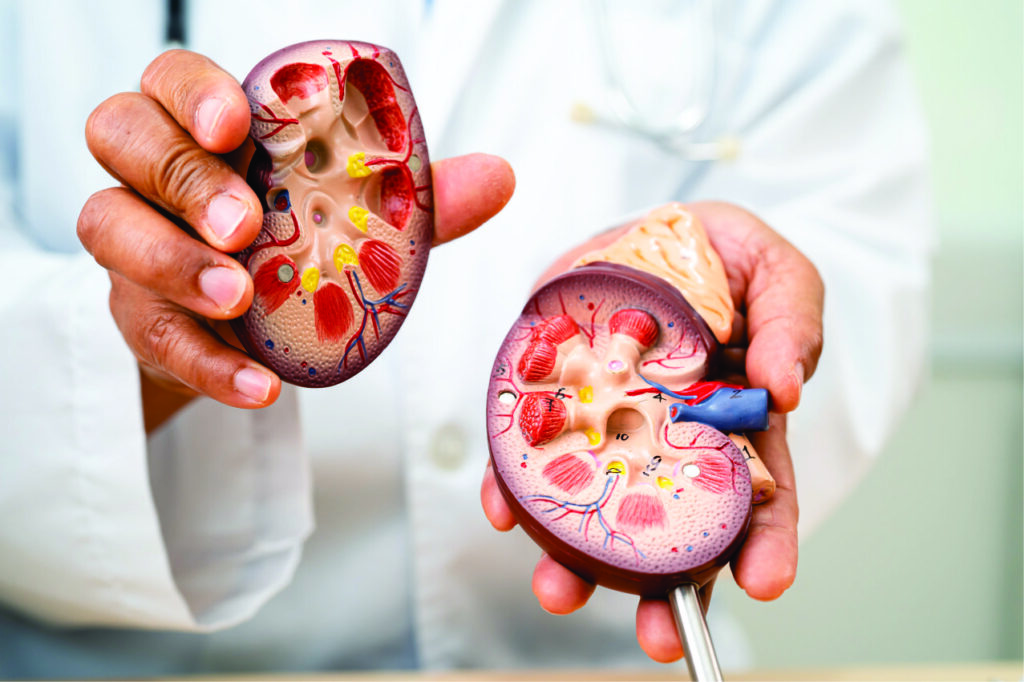Best Kidney Stone Hospital – Agrawal Hospital at Mavliya Nagar, Jaipur – SUPER SPECIALITY HEALTH CARE
Kidney stone disease is a prevalent and painful condition affecting millions globally. Stones are hard deposits made of minerals and salts that form in the kidneys, typically from high concentrations of calcium, oxalate, or uric acid. While most stones form and pass unnoticed, larger stones can cause significant pain, obstruct the urinary tract, and lead to complications like infections or kidney damage. This article explores the latest developments in understanding, preventing, and treating kidney stones, highlighting innovative treatment options that provide new hope for patients.

Understanding Kidney Stones: A Complex Condition
The formation of kidney stones is a complex process influenced by genetics, diet, and lifestyle. Factors such as dehydration, a high-sodium diet, obesity, and certain medical conditions increase the risk. While four types of kidney stones exist — calcium, uric acid, struvite, and cystine stones — calcium oxalate stones are the most common. This variety results from calcium binding with oxalate, an organic acid found in certain foods, leading to crystal formation in the kidneys.
Interestingly, recent research suggests that kidney stones may develop over a long period, not just as single events, but as complex cycles where small fragments can grow into larger stones due to repeated crystallization. This understanding has driven research towards prevention techniques, targeting early stone formation and exploring genetic predispositions to identify individuals at high risk.
Current Diagnostic Approaches
Diagnostic imaging is essential for determining the size, location, and type of kidney stones. Traditional imaging techniques include X-rays, CT scans, and ultrasounds, with CT scans offering the highest accuracy. However, advancements in imaging technology are allowing for quicker and more accurate diagnoses with lower radiation exposure. Ultrasound imaging is often preferred in pediatric cases and pregnant women, as it is safer than CT scans.
In addition to imaging, advancements in blood and urine tests have improved the understanding of metabolic conditions underlying stone formation. By analyzing metabolic patterns, healthcare providers can better understand what type of stones are most likely to develop in a particular patient, allowing for personalized treatment plans that target specific risk factors.

Innovations in Kidney Stone Treatment
Treatment options for kidney stones depend on the size, type, and location of the stone, as well as the patient’s overall health. Below are some of the most innovative treatment techniques in use today:
1. Extracorporeal Shock Wave Lithotripsy (ESWL)
ESWL is a non-invasive technique that uses shock waves to break kidney stones into smaller fragments, allowing them to pass more easily through the urinary tract. With improvements in targeting technology, this procedure has become more efficient and less painful for patients. ESWL is particularly effective for small-to-medium-sized stones and reduces the need for surgery.
2. Percutaneous Nephrolithotomy (PCNL)
For larger stones that cannot pass on their own, PCNL is a minimally invasive surgical procedure where a small incision is made in the back, and a scope is inserted to remove the stones directly. Newer PCNL techniques are less invasive, with smaller instruments and enhanced visualization capabilities, reducing recovery time and complications. Recent advancements in robotics are further refining PCNL, making it even safer and more effective.
3. Ureteroscopy and Laser Lithotripsy
Ureteroscopy is a procedure where a thin scope is inserted through the urethra and bladder to reach the stone. Laser lithotripsy is often used to break the stone into small pieces, which can then be removed or allowed to pass naturally. This technique has proven especially effective for stones located in the ureter or lower kidney. Recent improvements in laser technology, including the use of fiber-optic lasers, have made ureteroscopy safer, more precise, and less painful for patients.
4. Medical Expulsive Therapy (MET)
In cases where stones are small enough to pass naturally, medications can help. MET involves the use of drugs, such as alpha-blockers, to relax the muscles in the urinary tract, facilitating the passage of stones. Research is ongoing to improve the efficacy of MET by combining drugs that can better target stone location, size, and type, making this approach even more effective in the future.
5. Biomimetic and Dissolution Treatments
One of the most exciting developments in kidney stone treatment is biomimetic therapy, which uses substances designed to mimic the kidney’s natural inhibitors of stone formation. Researchers are working on drugs that prevent the crystal growth of calcium oxalate stones, which could revolutionize the treatment for patients who are prone to recurring stones. Additionally, advancements in dissolution agents, specifically for uric acid stones, aim to dissolve stones directly, reducing the need for invasive treatment.
Prevention: A Key Aspect of Kidney Stone Management
Preventing kidney stones requires a multifaceted approach, including dietary changes, lifestyle adjustments, and, in some cases, medication. Increasing fluid intake is one of the most effective prevention methods, as it helps to dilute substances in the urine that form stones. Dietary recommendations include reducing salt, limiting animal protein, and avoiding high-oxalate foods like spinach and nuts. Additionally, medications may be prescribed to manage underlying conditions that contribute to stone formation, such as hypercalciuria (high calcium levels in the urine) or hyperuricosuria (high uric acid levels).
The Future of Kidney Stone Treatment
Research on kidney stones continues to advance, with a particular focus on preventive care and personalized medicine. Genetic testing may soon allow healthcare providers to identify individuals at high risk for kidney stones, enabling early intervention and more tailored treatments. Additionally, the exploration of nanotechnology offers promise in targeting and breaking down stones with unprecedented precision.
Conclusion
Kidney stone disease is an evolving field with exciting new treatment options and prevention strategies. From non-invasive shock wave therapies to cutting-edge biomimetic agents, the future of kidney stone management is focused on reducing patient discomfort, minimizing invasive procedures, and improving long-term outcomes. These innovations provide hope that the burden of kidney stone disease may be significantly reduced, allowing patients to lead healthier, pain-free lives.
